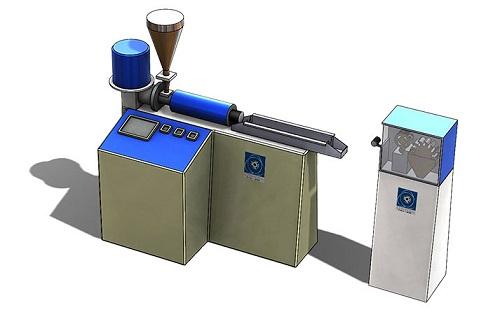In the realm of laboratory research and industrial development, the use of specialized equipment plays a pivotal role in material processing and experimentation. Among these essential tools, lab extruder machine stand out as versatile apparatuses that facilitate the production and analysis of various materials in a controlled environment. From polymers to food products, these devices offer scientists and engineers the capability to precisely manipulate and shape substances for a wide range of applications.
Understanding Lab Extruder Machines
What is a Lab Extruder Machine?
A lab extruder machine, also known simply as an extruder, is a device designed to process materials by pushing them through a die to create a continuous profile. The machine typically consists of a barrel, a screw, and a motor assembly. The material is fed into the barrel where it is gradually heated and compressed by the rotating screw. As the material moves along the screw, it undergoes mixing, melting, and shearing, ultimately emerging from the die in the desired shape.
Components of a Lab Extruder Machine
- Barrel: The barrel is a cylindrical chamber through which the material passes. It is often heated to facilitate the processing of thermoplastic materials.
- Screw: The screw is a helical-shaped shaft that rotates within the barrel. Its primary function is to convey, mix, and compress the material as it moves towards the die.
- Die: The die is a specialized opening through which the processed material exits the extruder. It determines the final shape and dimensions of the product.
- Motor Assembly: The motor assembly provides the power necessary to drive the screw and control the speed and torque of the extrusion process.
Applications of Lab Extruder Machines
Polymer Processing
Lab extruders are extensively used in polymer research and development for the production of plastic pellets, films, fibers, and profiles. By adjusting the temperature, screw speed, and pressure, scientists can precisely control the properties of the extruded polymer, such as its molecular orientation, crystallinity, and mechanical strength.
Food and Pharmaceutical Industries
In the food and pharmaceutical industries, lab extruders play a vital role in the formulation and production of various products. They are used to extrude doughs, pastes, and gels into specific shapes for snacks, pasta, and confectionery. Additionally, extrusion is employed in the manufacturing of pharmaceutical tablets, capsules, and controlled-release drug delivery systems.
Composite Materials
Lab extruders are also utilized in the development of composite materials by combining polymers with reinforcing fillers, such as fibers or particles. Through extrusion, these materials can be processed into sheets, rods, or tubes with enhanced mechanical properties for applications in automotive, aerospace, and construction industries.
Advantages of Lab Extruder Machines
- Precision Control: Lab extruders offer precise control over processing parameters, allowing researchers to tailor the properties of the extruded material according to specific requirements.
- Efficiency: The continuous nature of the extrusion process enables high throughput and efficient production of uniform products with minimal waste.
- Versatility: Lab extruders are versatile machines capable of processing a wide range of materials, including polymers, food ingredients, and pharmaceutical compounds.
- Scale-Up Potential: Results obtained from lab-scale extrusion experiments can be easily scaled up to industrial production, providing a seamless transition from research to manufacturing.
Conclusion
Lab extruder machines are indispensable tools in materials science, offering researchers and engineers the ability to explore, innovate, and produce a diverse array of materials with precision and efficiency. Whether in polymer processing, food production, or composite materials development, the versatility and control afforded by these machines continue to drive advancements across various industries, shaping the future of material innovation and technology.
